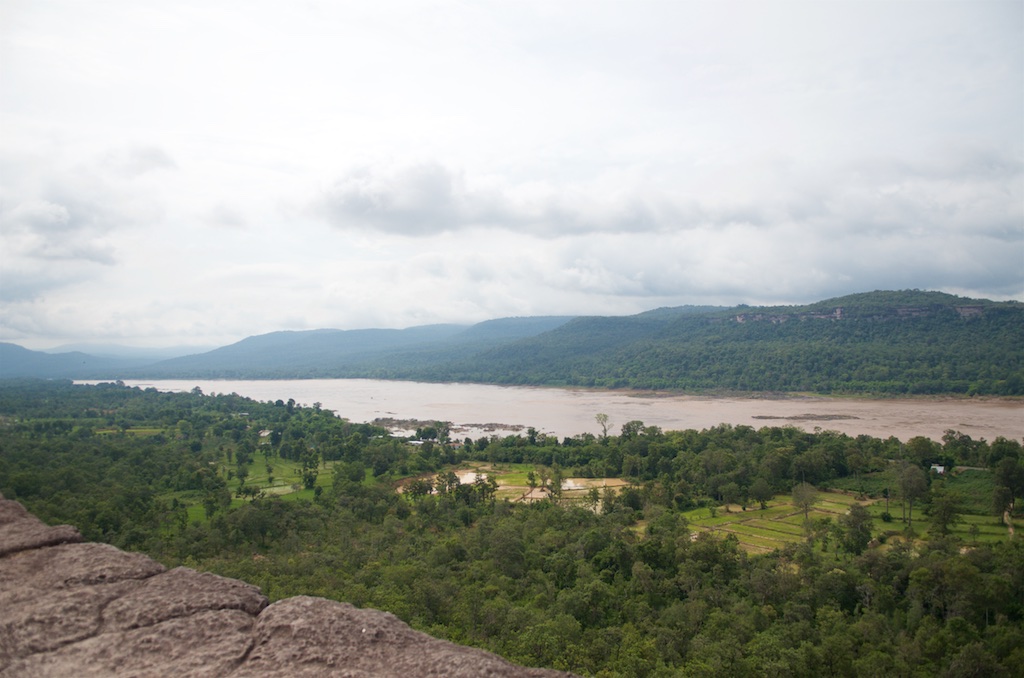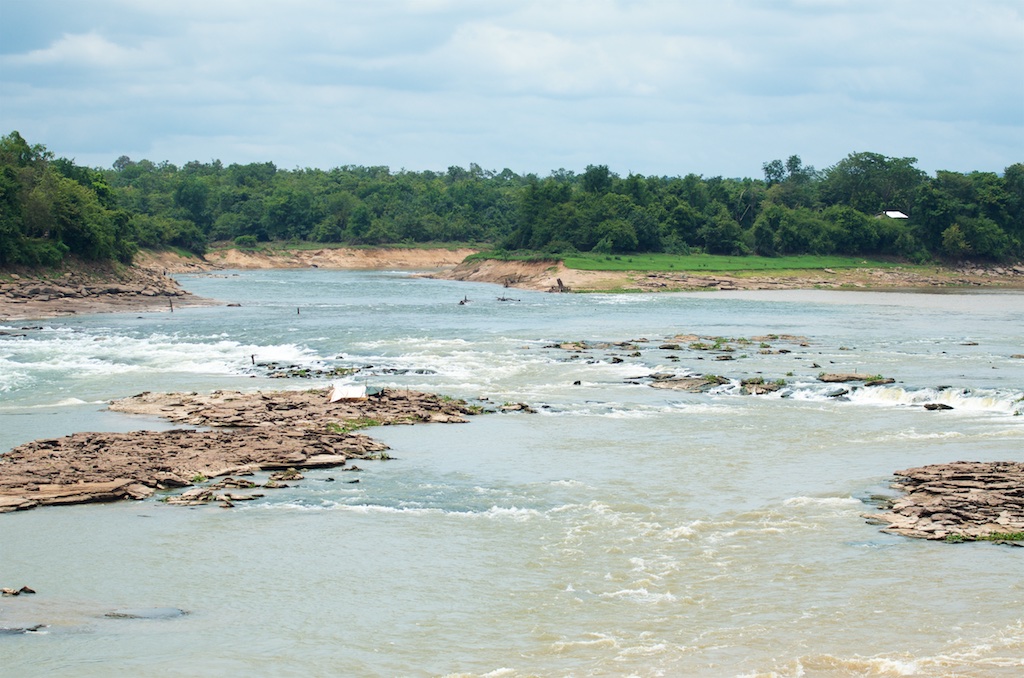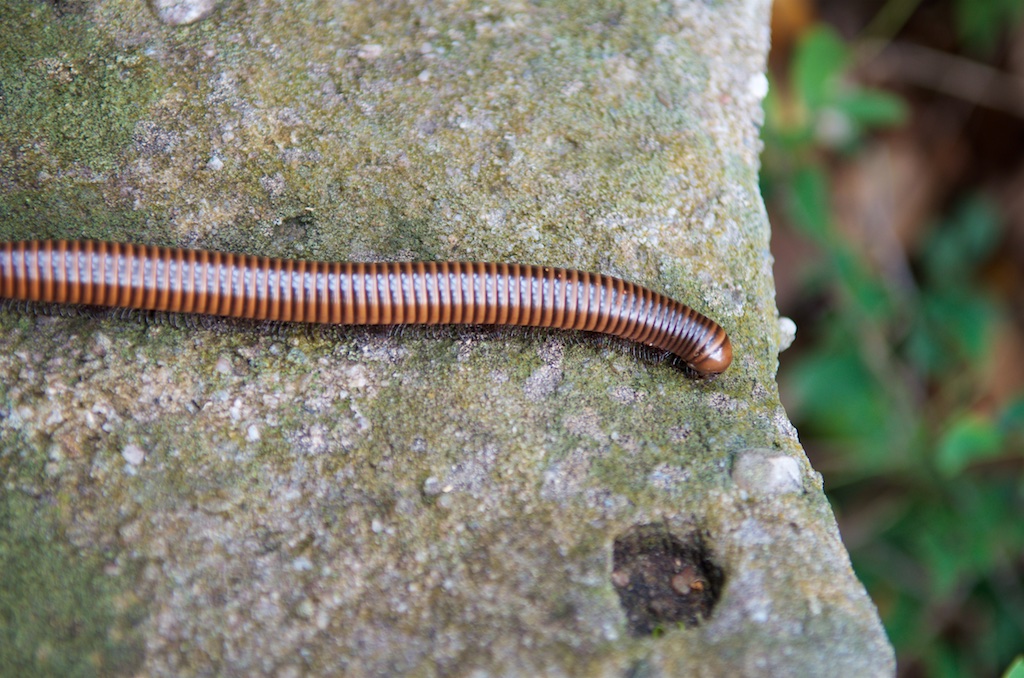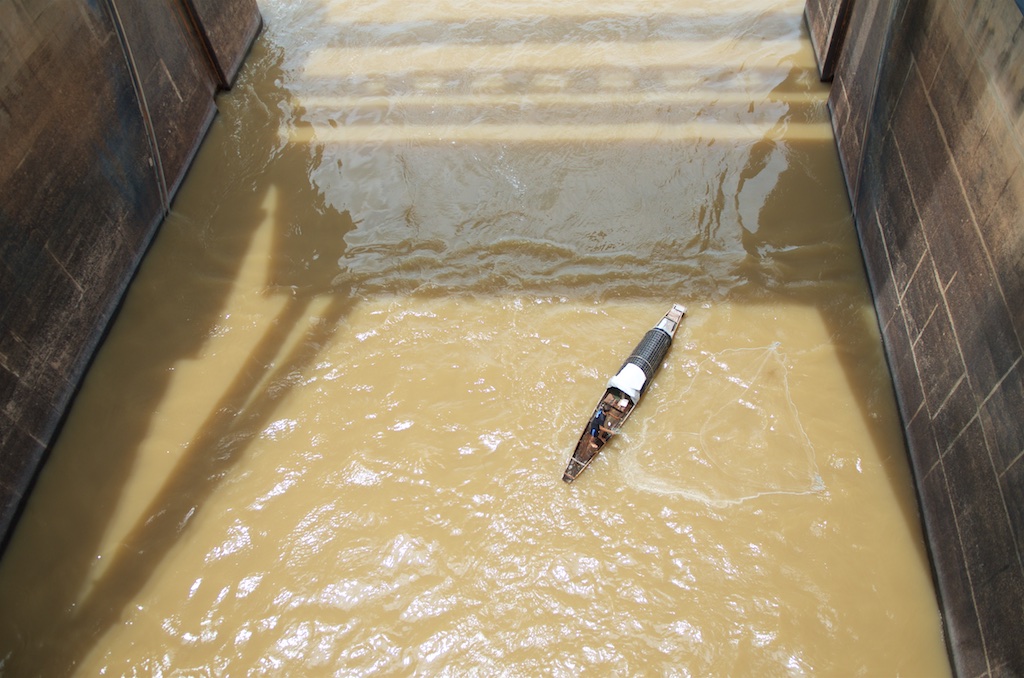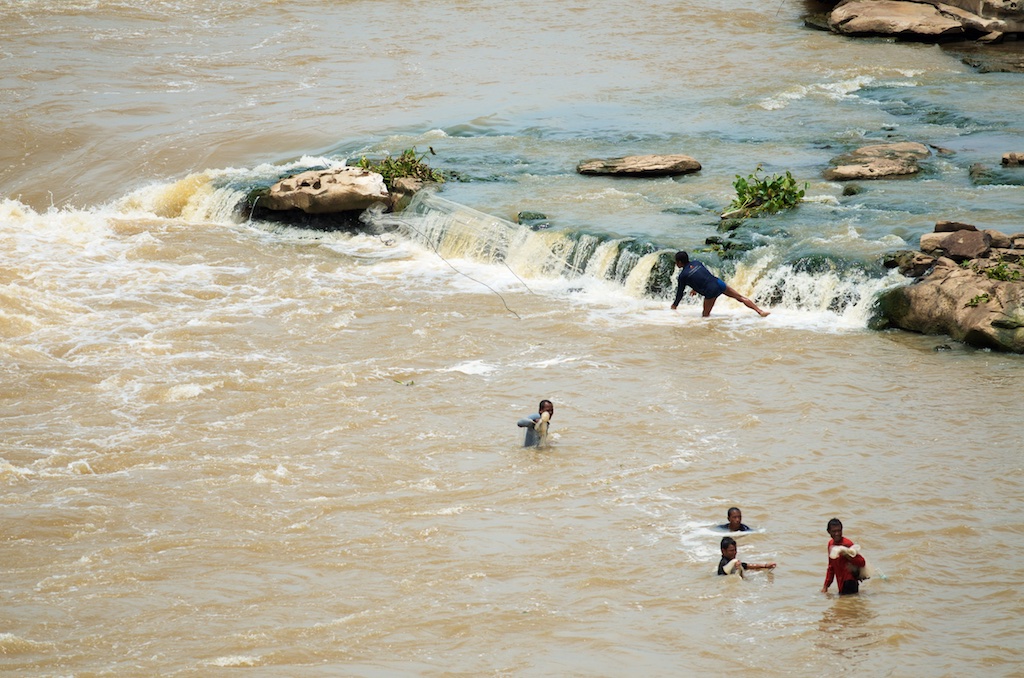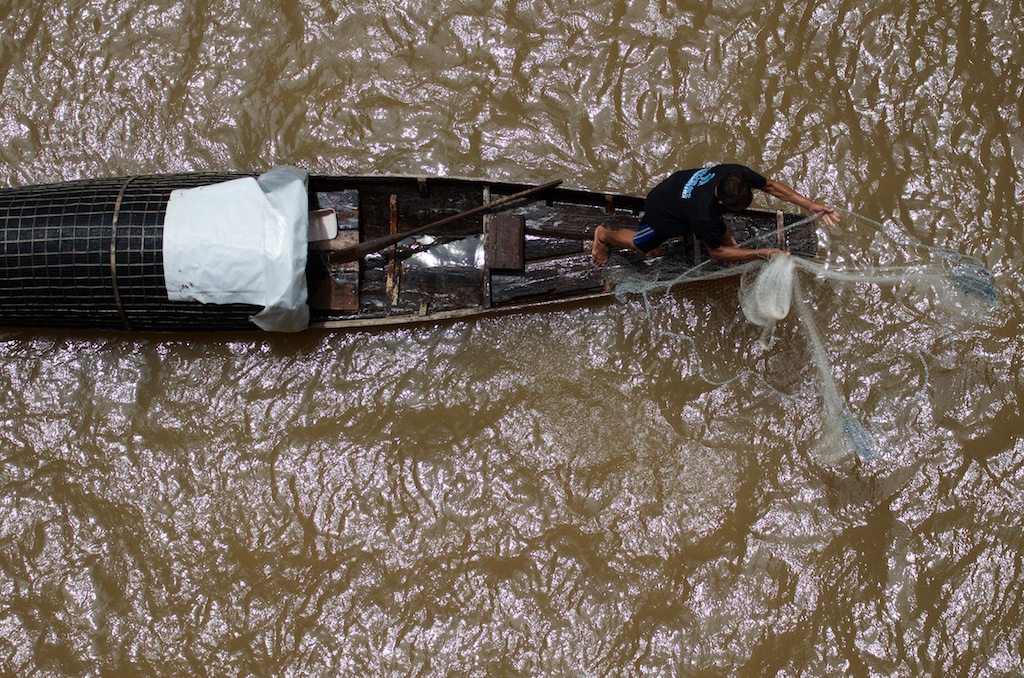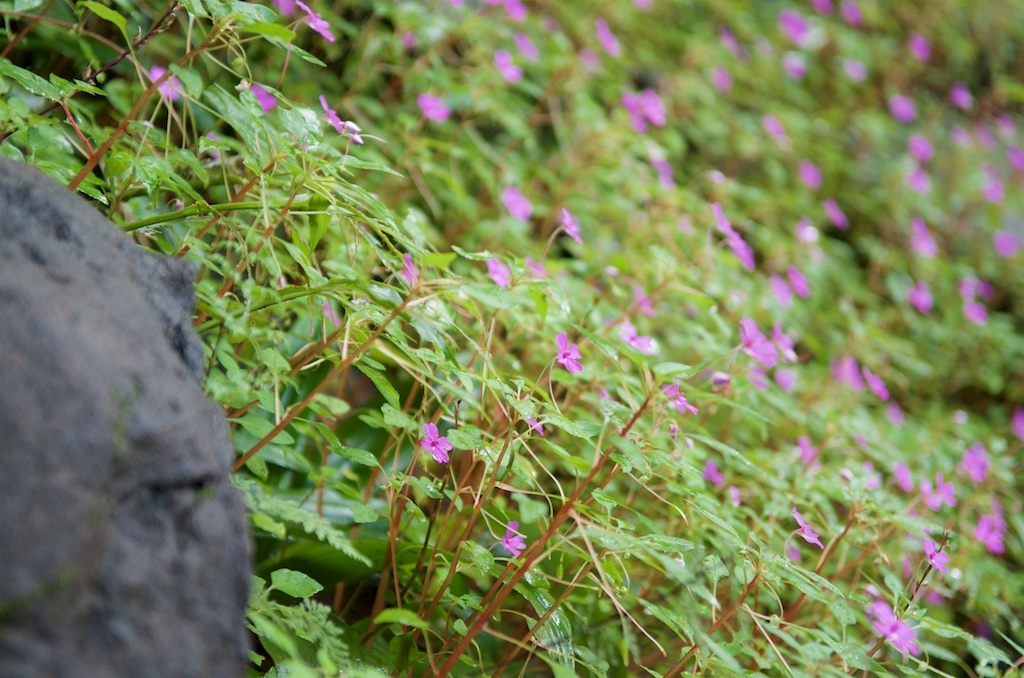สวัสดี ฉันชื่อแอรอน “Hello,” I said. “My name is Aaron.”
ฉันเป็นนักศึกษา ฉันทำวิจัยเกี่ยวกับระบบนิเวศแม่น้ำ “I’m a graduate student studying ecology of rivers.”
ฉันขออนุญาตจากชุมชนของคุณให้ศึกษาแม่น้ำสายนี้ได้ไหม? “May I have your community’s permission to study this river?” I asked.
While I had lived and worked in Thailand for several years prior to starting graduate research, I had never before found myself in this particular position. Alone. In an unfamiliar community. Asking for access to a stretch of river managed by local communities in which to conduct my dissertation research. It felt like the entire success of my graduate studies hinged on the response I would get.
เราจะมีการประชุม “We’ll have a meeting,” replied the headwoman.
Thankfully, I had arrived in Mae Louie, a small community of ethnic Karen located in northwestern Thailand near the border of Myanmar (Burma) on a Saturday. Thankfully a Saturday, because that meant this community, like many other Baptist Karen communities, would gather for church the following morning. My request would be added to the informal announcement section of the 10:00am service.
The positive outcome of this meeting was the start of a now decade-old relationship that has become more critical to the success of my research than I could have ever imagined during that nervous first introduction. Beyond merely providing research access to a beautiful stretch of the Mae Ngao River, members of the Mae Louie community housed me, fed me, and provided encouragement over the course of months of intense fieldwork. Community leaders also provided information about the community’s fishery conservation actions and the natural histories of many of the river’s fishes. They also told me about their struggle to maintain self-governance of historical agricultural land and forests and made critical introductions to leaders of other communities within the Mae Ngao valley necessary to expand the scope of my work.
Fieldwork in communities often results in curious onlookers, presenting a great opportunity for inclusion and awareness raising. Here two regular observers help me release a radio-tagged mahseer as part of my NatGeo and Fisheries Conservation Fund sponsored research on fish movement in Mae Ngao, Mae Hong Son, Thailand.
Peter Duker, a colleague, and my Mae Louie host family gather bundles of freshly harvested soybeans in the back of my research truck for transport for threshing in Mae Ngao, Mae Hong Son, Thailand.
My initial efforts to repay the Mae Ngao Communities consisted largely of the free use of my personal field truck, a rare enough commodity within the valley. I carried loads of lumber and roofing tiles for building houses. I hauled tons of soybeans after harvest between distant fields and villages and from villages to market in town. I even raced an elderly man bitten by something in a rice field three and half hours to the nearest hospital (thankfully, it was a giant centipede and not a cobra, which had delivered a deadly bite to another villager that same year). Over time I have gradually built more relationships with communities throughout the Mae Ngao valley. Now, I rarely travel anywhere alone or with an empty truck bed.
Along the way, I have collected many stories worth sharing. I plan to share several in an upcoming blog series, made possible through a National Geographic Early Career Award. I will focus on my experience over the past ten years living and working closely with the incredible communities of Mae Ngao River. I’ll highlight conservation success stories, detail threats to this unique river system, and highlight individuals who are making a difference in these communities. In doing so, I hope I can encourage other scientists (and myself) to engage more closely with the communities and individuals who facilitate our research and contribute to our success in so many ways.












